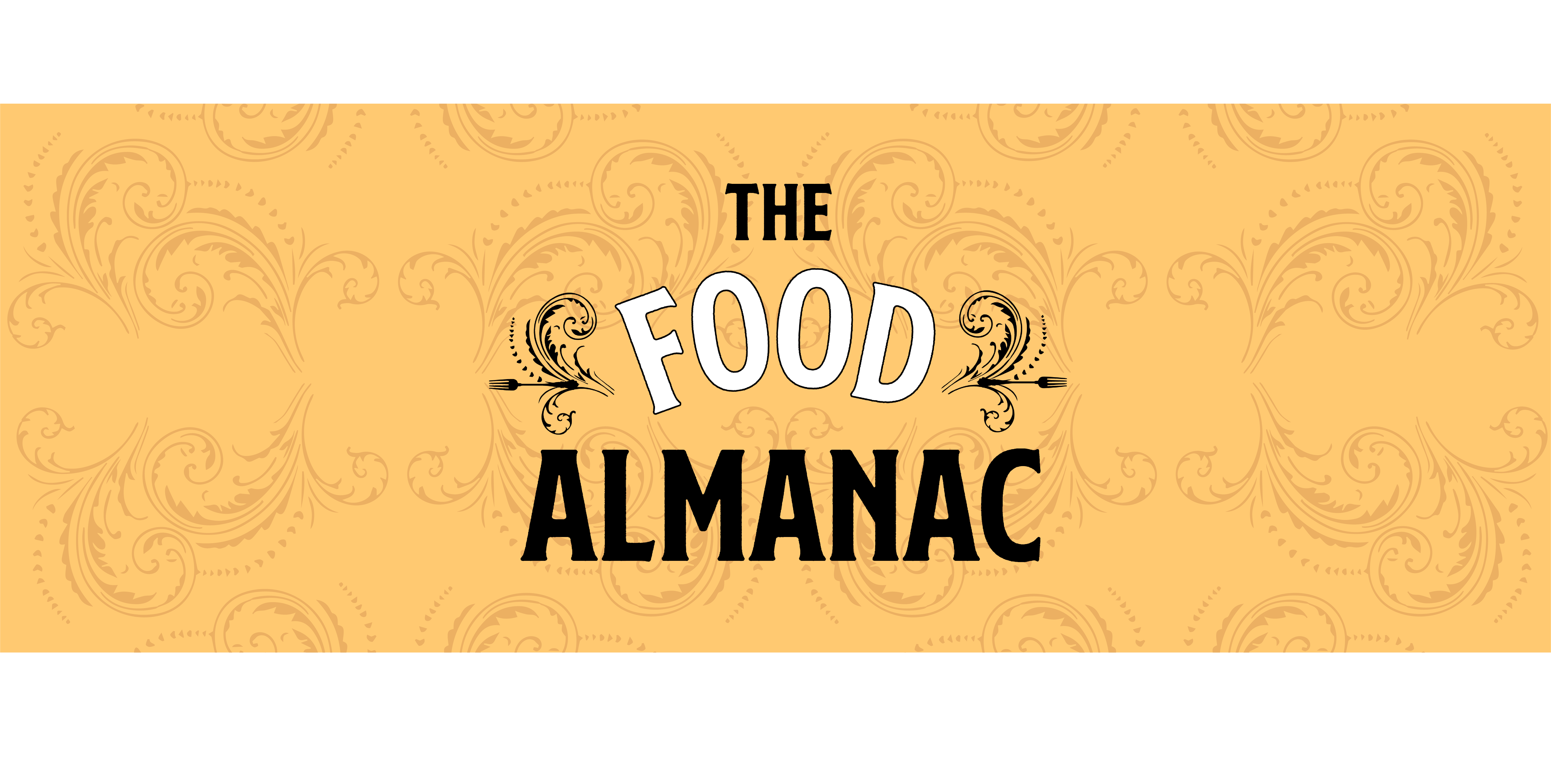June 4
National Blue Cheese Day
Dime Beer. Blue Cheese. Roquefort. Maytag Blue. Cheeseville. Bread Crumbs. Shopping Carts. Bolstering Wine.
Days Until. . .
NOWFE--...7 Father's Day--...11 Restaurant Week -- 12 Fourth of July -- 30
Food Calendar
It is National Blue Cheese Day. Today in 1070, Roquefort cheese is said to have been discovered. A shepherd found a chunk of cheese he left in a cave some time earlier near the town of Roquefort, France. It was moldy, but he was hungry. He found the mold gave the cheese an exciting new flavor. This is probably just a legend. Cheeses that become delicious after being infected with molds have been known since Roman times.
Roquefort is the most famous of all blue cheeses, and the first cheese to have been recognized as unique to the place where it is made. It even has a slogan: "The King of Cheeses, and the Cheese of Kings." (It's not the only cheese that claims this.) The only true Roquefort comes from that same small area of France, where the Lacaune breed of sheep produce the milk from which it is made. Cheesemakers claim that the plants in that area, and the limestone caves in which the cheese is aged, are what's unique. The mold produces an acid that gives blue cheese its distinctive tang. The mold is the same penicillin mold that shows up on old bread. Roquefort has a particularly powerful taste.
Roquefort is not the only blue cheese. Among the more famous others are Stilton (from England), Gorgonzola (Italy), and Maytag (Iowa). Danish blue cheese probably outsells all of those put together. And there's lots of generic blue cheese out there.
Deft Dining Rule #421
(Mary Leigh's Law Of Wedge Salads.) The less expensive the iceberg wedge salad with blue cheese dressing, the better the salad.
Edible Dictionary
Maytag blue cheese, n.--A veined blue cheese made from homogenized cow's milk in Newton, Iowa. It was the first major American blue cheese, first produced in 1941 Frederick and Robert Maytag, grandsons of the founder of the Maytag Appliance Corporation. It represented a breakthrough in American cheesemaking, which had not before created a high-quality blue cheese with the penicillium mold used in European blue cheeses. It's a bit firmer than most of those, as well as less musky.
Gourmet Gazetteer
Cheeseville, Wisconsin shows up on maps as a town, but it's a rural area filled with a mix of farm fields, grazing land, and dairies. Very rural. There was once a farm with a large retail store selling cheese both on site and by mail order, but that may be defunct. Cheeseville is thirty-eight miles north of Milwaukee, and eighteen miles due west of the Lake Michigan shore. Dairy products are made in such quantities that the people around there call themselves Cheeseheads. If cheese isn't enough for a meal, you can drive three miles to Fredonia for lunch or dinner at the Fire Escape.
Food Inventions
A machine that turned large amounts of stale bread into even larger amounts of bread crumbs was patented today in 1895 by Joseph Lee. This paved the way for oysters Mosca and stuffed artichokes. . . The supermarket shopping cart was invented today in 1936 by Oklahoma supermarket owner Sylvan Goldman. The baskets on wheels looked much like the ones in use today, but smaller.
Annals Of Winemaking
Jean Antoine Claude Chaptal was born today in France in 1756. He was a chemist who worked in many fields, including winemaking. He introduced the practice of adding sugar to grape juice to assist poor vintages in fermenting to reasonable alcohol levels. Chaptalization, as the technique is now called, is still used in French winemaking, as well as in other parts of the world with short, cold growing seasons, places where the grapes might not ripen enough. It is forbidden in California, for instance, and in Italy.
The Saints
Today is the feast day of St. Francis Caracciolo, who lived in the 1500s. He is the patron saint of the Association of Italian Cooks. Also the city of Naples, so have a slice of pizza in his honor today.
Annals Of Cheap Drinks
Today in 1974, the Cleveland Indians introduced Ten-Cent Beer Night to boost attendance. It worked okay, but at those prices anybody could get drunk. And they did. Badly-behaved fans, many of whom were paying no attention to the game, turned the stadium into a brawl. The Indians had to forfeit the game. The same has not happened in restaurants with two-bit (or cheaper) cocktails. Which proves that people who spend their leisure time in restaurants behave better than sports fans. I rest my case.
Food Namesakes
Bergland Icey, an actor from (appropriately enough) Iceland was born today in 1977.
This isn't a food name, but every year I note the 1815 birthday of Jefferson Parish Kidder. He was a traveling politician in Vermont, Minnesota, and finally the Dakota Territory. But he sounds like the guy who suggested to Aaron Broussard that he send the pumping station operators home during the hurricane.
Words To Eat By
"What I know about our blue cheese dressing is that you'll either love it or hate it--no in between."--Dottye Bennett, the longtime waitress at Charlie's Steakhouse (she was Charlie's daughter).
Words To Drink By
"Don't forget that the flavors of wine and cheese depend upon the types of infecting micro-organisms."--Martin H. Fischer, Cincinnati physiology professor.

